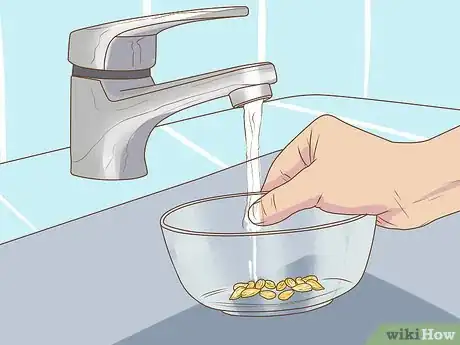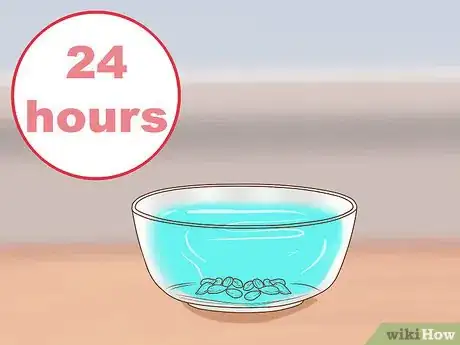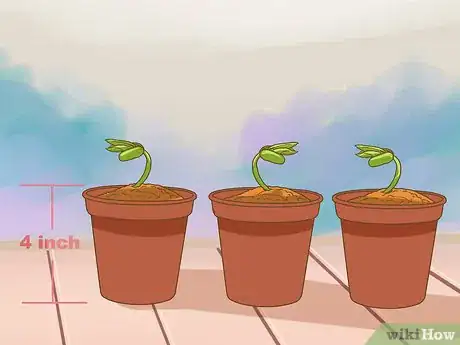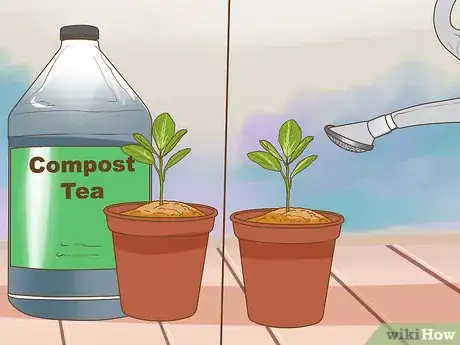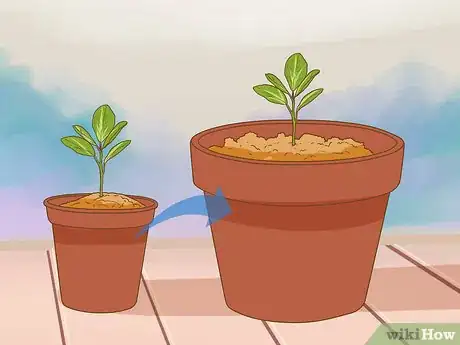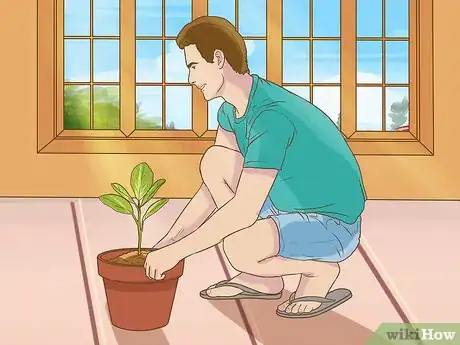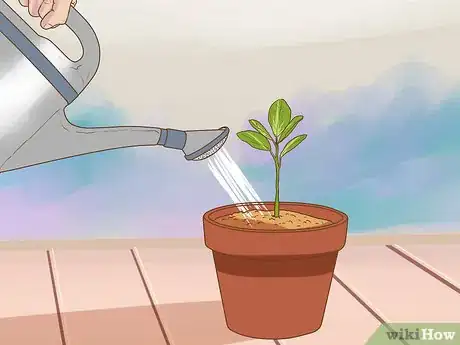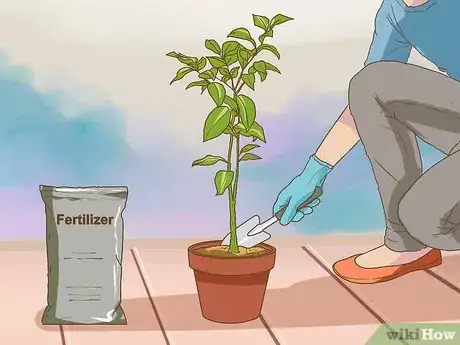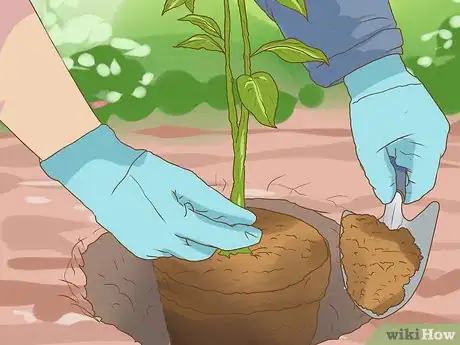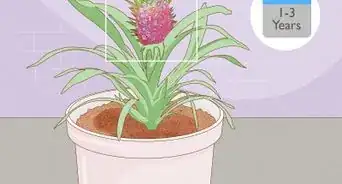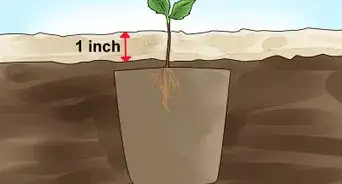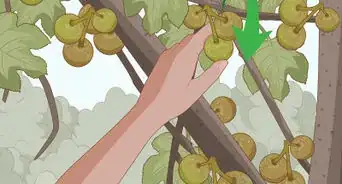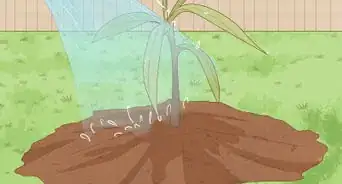This article was co-authored by Andrew Carberry, MPH. Andrew Carberry is a Food Systems Expert and the Senior Program Associate at the Wallace Centere at Winrock International in Little Rock, Arkansas. He has worked in food systems since 2008 and has experience working on farm-to-school projects, food safety programs, and working with local and state coalitions in Arkansas. He is a graduate of the College of William and Mary and holds a Masters degree in public health and nutrition from the University of Tennessee.
wikiHow marks an article as reader-approved once it receives enough positive feedback. This article received 22 testimonials and 91% of readers who voted found it helpful, earning it our reader-approved status.
This article has been viewed 655,088 times.
Orange trees are a beautiful tree to have growing in your home or backyard. Not only do they produce wonderful smelling leaves, but mature trees also bear fruit. Orange seeds are quite easy to germinate, but a tree grown from an orange seed can take anywhere from seven to 15 years to bear fruit. If you're looking for a tree that will produce fruit faster, you're better off getting a grafted tree from a nursery. But if you're looking for a fun project and want to grow a tree for your home or yard, germinating an orange seed is a fun and easy way to do it.
Steps
Gathering and Cleaning the Seeds
-
1Remove the seeds from an orange. Slice an orange in half to reveal the seeds. Use a spoon or knife to pick out the seeds. The tree that grows will likely produce similar fruit, so make sure you choose the seeds of an orange variety you like.
- Some orange varieties, such as navels and clementines, are seedless, and you won’t be able to propagate orange trees this way.[1]
-
2Select and clean the seeds. Look for plump, whole, healthy seeds that don’t have any spots, marks, dents, breaks, discoloration, or other blemishes or imperfections. Transfer the seeds to a bowl and fill it with clean water. Use a clean tea cloth to wipe the seeds and remove all traces of flesh and juice.
- Cleaning the seeds is also important for removing fungus and mold spores, and to prevent fruit flies.[2]
- You can clean and germinate all the seeds in the orange, and then pick the biggest and healthiest sprouts to plant.
Advertisement -
3Soak the seeds. Fill a small bowl with clean room temperature water. Transfer the seeds to the water and let them soak for 24 hours. Many seeds have a better chance of sprouting if they're soaked first, because soaking softens the seed coating and kickstarts the germination.[3]
- When the seeds have soaked for 24 hours, drain the water and place the seeds on a clean towel.
- Don’t soak the seeds for longer than this, or they may become waterlogged and not sprout.
Sprouting the Seeds
-
1Transfer the seed to a prepared pot or into the ground. Get a 4-inch (10-cm) planting pot with drainage holes in the bottom or find a good spot in your yard to plant the seed. If planting directly into the ground, then dig a small hole and place the seed in the ground. If planting in a pot, fill the bottom with a thin layer of pebbles to increase drainage, and fill the pot the rest of the way with potting soil. Make a half-inch (1.3 cm) hole in the center of the soil with your finger. Place the seed into the hole and cover it with soil.
- After transplanting the seed to a pot, continue providing it with lots of direct sunlight every day.
-
2Fertilize and water the sprouts as they grow. Newly sprouted seedlings will benefit from a mild fertilizer, such as compost tea. Add enough of the compost tea to moisten the soil. Repeat every two weeks. Water the soil thoroughly once a week, or if the soil starts to become dry.
- If the soil dries out too often, the orange tree will not survive.[4]
- As the seedling develops into a tree, it will start getting bigger and grow leaves.
Transplanting the Seedling
-
1Prepare a larger pot when leaves appear. After several weeks, when the seedling has developed a few sets of leaves and grown in size, it will need to be transplanted to a larger pot. Use an 8” or 10” pot. Make sure it has drainage holes in the bottom, and add a layer of stones or pebbles first.
- Fill the pot most of the way with potting soil. Mix in a handful of peat moss and a handful of sand to provide the tree with well-draining and slightly acidic soil. Orange trees like a pH between 6 and 7.0.
- You can also look for citrus-specific potting soils at your garden center.
-
2Plant the seedling in the larger pot. Make a hole in the center of the soil in the new pot that’s about 2 inches (5 cm) deep and 2 inches wide. First, put a layer of soil in the bottom of the pot you will be using. Then, squeeze or tap the pot that the seedling is currently in to loosen the soil. As you do so, slide the soil and roots out of the pot in one piece and transfer them into the new pot. After transferring, fill in the area around the root ball with new soil.
- Water the soil right away so that it’s moist.
-
3Place the pot in a sunny location. Move the tree to a sunny location that gets plenty of direct light. Near a southern or south-eastern window is great, but a solarium or greenhouse is even better.
- In warm climates, you can move the potted tree outside in spring and summer, but place it somewhere that’s protected from strong winds.[5]
-
4Provide plenty of water. Orange trees love regular watering. During the warm spring and summer months, water the plant deeply once a week. In areas where there's regular rainfall, water when necessary to make sure the soil stays moist.
- During the winter months, allow the top layer of soil to dry out partially before watering.[6]
-
5Fertilize the growing tree. Orange trees are heavy feeders and need lots of nutrients. Feed the tree with a balanced fertilizer, such as 6-6-6, twice a year. Feed the tree once in early spring and once in early fall. This is especially important during the first few years, before the tree starts bearing fruit.[7]
- There are also citrus specific fertilizers that you may be able to find at a garden center.
-
6Transplant to larger pots or an outdoor location as the tree grows. When the tree is about a year old, transplant it to a 10- or 12-inch (25- or 30-cm) pot. After that, transplant the tree to a larger pot every March. Alternatively, if you live in an area that stays relatively warm all year round, you can transplant the tree to a sunny location outside.[8]
- Orange trees will typically not survive if they're exposed to temperatures below 25 F (-4 C), so they can't be permanently transplanted outside in cooler areas.
- Fully grown orange trees are large, so if you live in a cooler climate, keep the tree in a solarium or greenhouse if possible.
Expert Q&A
Did you know you can get expert answers for this article?
Unlock expert answers by supporting wikiHow
-
QuestionHow long do I leave them in the mist paper
 Andrew Carberry, MPHAndrew Carberry is a Food Systems Expert and the Senior Program Associate at the Wallace Centere at Winrock International in Little Rock, Arkansas. He has worked in food systems since 2008 and has experience working on farm-to-school projects, food safety programs, and working with local and state coalitions in Arkansas. He is a graduate of the College of William and Mary and holds a Masters degree in public health and nutrition from the University of Tennessee.
Andrew Carberry, MPHAndrew Carberry is a Food Systems Expert and the Senior Program Associate at the Wallace Centere at Winrock International in Little Rock, Arkansas. He has worked in food systems since 2008 and has experience working on farm-to-school projects, food safety programs, and working with local and state coalitions in Arkansas. He is a graduate of the College of William and Mary and holds a Masters degree in public health and nutrition from the University of Tennessee.
Food Systems Expert
-
QuestionWhat if the seeds have been out of the orange for a long time?
 Community AnswerIf the seeds have been kept out for a long time, they might have dried up, and will not germinate. If they have been kept moist, it does not really matter how long they have been out of the orange.
Community AnswerIf the seeds have been kept out for a long time, they might have dried up, and will not germinate. If they have been kept moist, it does not really matter how long they have been out of the orange. -
QuestionHow long can an orange tree live?
 Community AnswerWhen given proper care, they bear fruit for 50 years or more, according to Four Winds Growers. It's not uncommon for healthy trees to live for more than a century. Trees planted in the ground produce fruit longer than container-grown orange trees.
Community AnswerWhen given proper care, they bear fruit for 50 years or more, according to Four Winds Growers. It's not uncommon for healthy trees to live for more than a century. Trees planted in the ground produce fruit longer than container-grown orange trees.
References
- ↑ https://www.scientificamerican.com/article/how-do-seedless-fruits-ar/
- ↑ http://www.motherearthliving.com/in-the-garden/how-to-grow-citrus-trees-from-seed
- ↑ http://www.tradewindsfruit.com/content/seed-germination-tips.htm
- ↑ http://www.motherearthliving.com/in-the-garden/how-to-grow-citrus-trees-from-seed
- ↑ http://aggie-horticulture.tamu.edu/archives/parsons/fruit/orange.html
- ↑ https://www.rhs.org.uk/advice/grow-your-own/fruit/citrus
- ↑ http://www.almanac.com/plant/lemons-oranges
- ↑ https://www.rhs.org.uk/advice/grow-your-own/fruit/citrus
About This Article
To germinate orange seeds, first slice an orange in half and use a spoon to scoop the seeds out. Place the healthiest, plumpest seeds in a bowl and fill it with water. Use a cloth to wipe away any flesh and juice on the seeds. Then, transfer them to a new bowl of water and let them soak for 24 hours. Once they’ve soaked, plant each seed in a 4-inch (10-cm) pot filled with potting soil. Place the pots in a spot that gets a lot of bright, direct sunlight. After the seedlings have sprouted, water them once a week, or whenever the soil starts to get dry. You should also fertilize the seedlings with a mild fertilizer, like compost tea, every 2 weeks. Wait several weeks for the seedlings to develop a few sets of leaves, then transfer them to 8-inch (20-cm) pots so they have more room to grow. Mix some peat moss and sand into the potting soil when you transplant them so the soil is well draining and slightly acidic. Keep your orange seedlings in a sunny spot and continue to water them once a week. Once your orange tree is a year old, you can transplant it to a sunny spot outdoors if you live in a warm climate or continue potting it in a large pot every year. For tips on transplanting your newly sprouted seedlings, read on!

